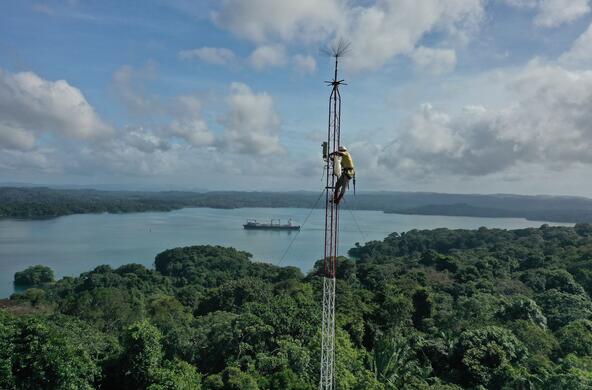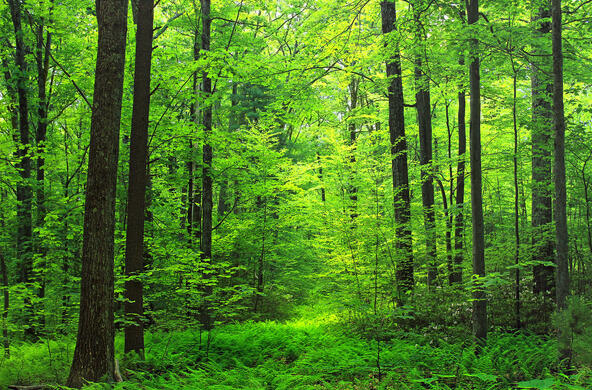When it comes to generating electricity, coal is a dirty fuel. It’s dirty to mine, dirty to burn, and dirty to dispose of the ash (see Coming from an ash pile near you).
But, until recently coal was the cheapest fuel for electric power, so it has been widely used across the U.S. by the electric utilities. Last year about 32% of our nation’s CO2 emissions came from coal-fired power plants.
Now, two factors are pushing for a switch away from coal—President Obama’s commitment to reduce carbon dioxide emissions to reduce global climate change and the low price of natural gas, which is now competitive with coal in electric power plants. There is widespread interest in natural gas across the electric utility industry, because various studies indicate that burning natural gas rather than coal can reduce CO2 emissions by about 40% for the equivalent amount of power generation. Utilities, such as Duke Energy, are proposing new natural gas-powered power plants, with the goal of reducing their CO2 emissions.
Environmental advocates face a dilemma with respect to natural gas—it is cleaner, but about half of our natural gas is now derived from hydraulic fracture (i.e., fracking) methodology, which many environmentalists oppose. And, natural gas is a fossil fuel that releases CO2 to the atmosphere.
From the mine to the power plant, there is little loss of coal to the environment. Unfortunately, that is not the case with natural gas, where there are leaks in the oil field, leaks from the pipeline distribution system, and leaks from storage. At least one study indicates a lower rate of leakage from natural gas fields using fracking, compared to conventional gas fields.
Leakage of natural gas, which is predominately methane, has another drawback. Methane is a powerful greenhouse gas that exerts about 86 times the global warming potential in the atmosphere compared to CO2 during the first 20 years after emission. The concentration of methane in Earth’s atmosphere is increasing every year, although it is not at all certain whether this is due to greater leakage of natural gas or increases from other sources, such as wetlands. Leakage from oil and gas fields makes a significant contribution to the annual emissions of methane to the atmosphere.
In any case, we need to include the emissions of methane from leaks in the natural gas distribution system in any comparison with coal. Consider the following: In burning coal about 25 grams of carbon are emitted to the atmosphere as carbon dioxide per MJ of energy produced. With natural gas, only about 15 grams of carbon are released. At first glance, gas looks great.
The leak rate of natural gas averages about 1.5% of production. Over a 20-year-period, a leakage rate of 1.5% would give natural gas nearly twice the impact on global climate change versus coal. I pick a 20-year period for the calculation because that is taken by many atmospheric scientists to be the window-of-opportunity we have to prevent harmful levels of climate change. By that account, switching to natural gas is a really bad idea.
Indeed, any leakage rate above about 1% of gross production negates the advantages of natural gas with respect to mitigating climate change. No surprise that the natural gas industry reports that the average leak rate in the U.S. is only about 0.42% of gas production, but individual studies report larger values. The leak rate also varies widely among U.S. cities. Incidentally, the recent leakage from the Porter Ranch natural gas storage facility in California amounted to 0.01% of annual emissions in the U.S.
As the arguments for coal versus natural gas play out in the coming months, the choice will depend upon the leak rate for natural gas. If you want to hedge your bets, encourage your power company to invest in wind, solar, tidal or geothermal power. These are now cost-competitive with coal and offer a no-regrets future.
References
Allen, D.T., V.M. Torres, J. Thomas, D.W. Sullivan, M. Harrison, A. Hendler, S.C. Herndon, C.E. Kolb, M.P. Fraser, A.D. Hill, B.K. Lamb, J. Miskimins, R.F. Sawyer and J.H. Seinfeld. 2013. Measurements of methane emissions at natural gas production sites in the United States. Proceedings of the National Academy of Sciences doi: 10.1073/pnas.1304880110
Brandt, A.R., G.A. Heath, E.A.Kort, F.O’Sullivan, G. Petron, S.M. Jordaan, P. Tans, J. Wilcox, A.M. Gopstein, A. Arent, S. Wofsy, N.J. Brown, R. Bradley, G.D. Stucky, D. Eardley and R. Harriss. 2014. Methane leaks from North American gas systems. Science 343: 733-735.
Burnham, A., J. Han, C.E. Clark, M. Wang, J.B. Dunn, and I. Palou-Rivera. 2012. Life-cycle greenhouse gas emissions of shale gas, natural gas, coal and petroleum. Environmental Science and Technology 46: 619-627.
Omara, M., M.R. Sullivan, X. Li, R. Subramanian, A.L. Robinson, and A.A. Presto. 2016. Methane Emissions from Conventional and Unconventional Natural Gas Production Sites in the Marcellus Shale Basin. Environmental Science and Technology 50: 2099-2107.
Sanchez, N. and D.C. Mays. 2015. Effect of methane leakage on the greenhouse gas footprint of electricity generation. Climatic Change 133: 169-178.
Schaefer, H., S.E. Fletcher, C. Veidt, K.R. Lassey, G.W. Brailsford, T.M. Browmley, E.J. Dlugokencky, S.E. Michel, J.R. Miller, I. Levin, D.C. Lowe, R.J. Martin, B.H. Vaughn, and J.W.C. White. 2016. A 21st-century shift from fossil-fuel to biogenic methane emissions indicated by 13CH4. Science 352: 81-83.
Schindell, D.T., G. Faluvegi, D.M. Koch, G.A. Schmidt, N. Unger, and S.E. Bauer. 2009. Improved attribution of climate forcing to emissions. Science 326: 716-718.
Zavala-Araiza, D., D.R. Lyon, R.A. Alvarez, K.J. Davis, R. Harriss, S.C. Herndon, A. Karion, E.A. Kort, B.K. Lamb, X. Lan, A.J. Marchese, S.W. Pacala, A.L. Robinson, P.B. Shepson, C. Sweeney, R. Talbot, A. Townsend-Small, T. Yacovitch, D.J. Zimmerle, and S.P. Hamburg. 2015. Reconciling divergent estimates of oil and gas methane emissions. Proceedings of the National Academy of Sciences 112: 15597-15602.







